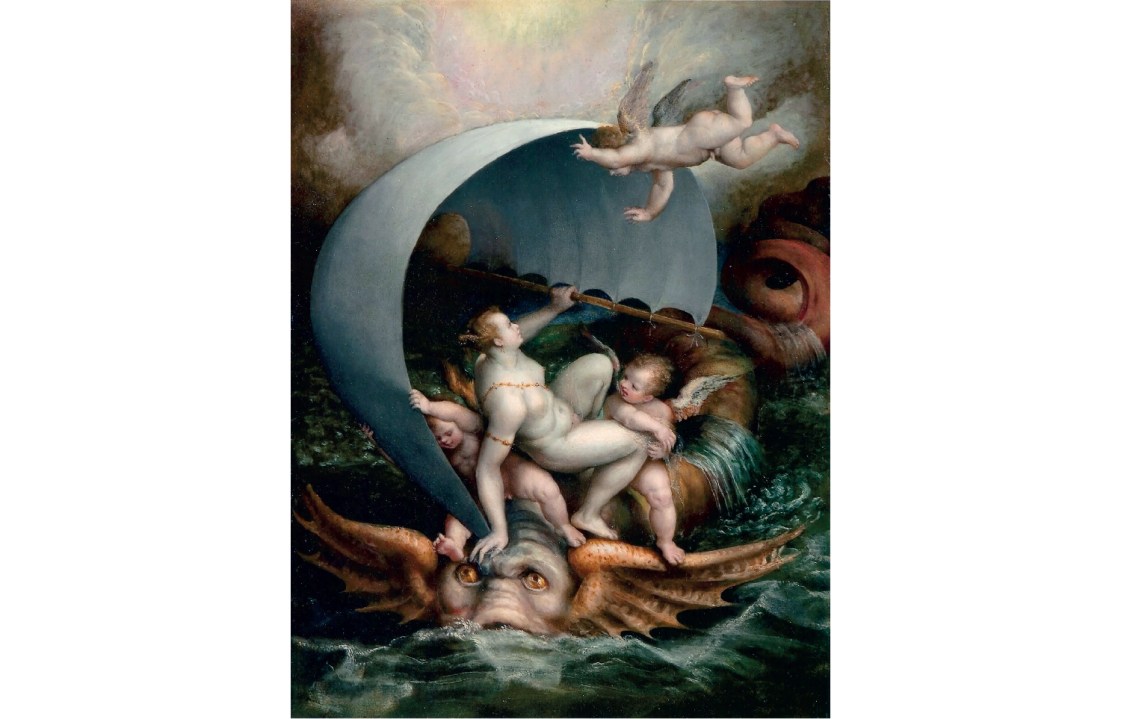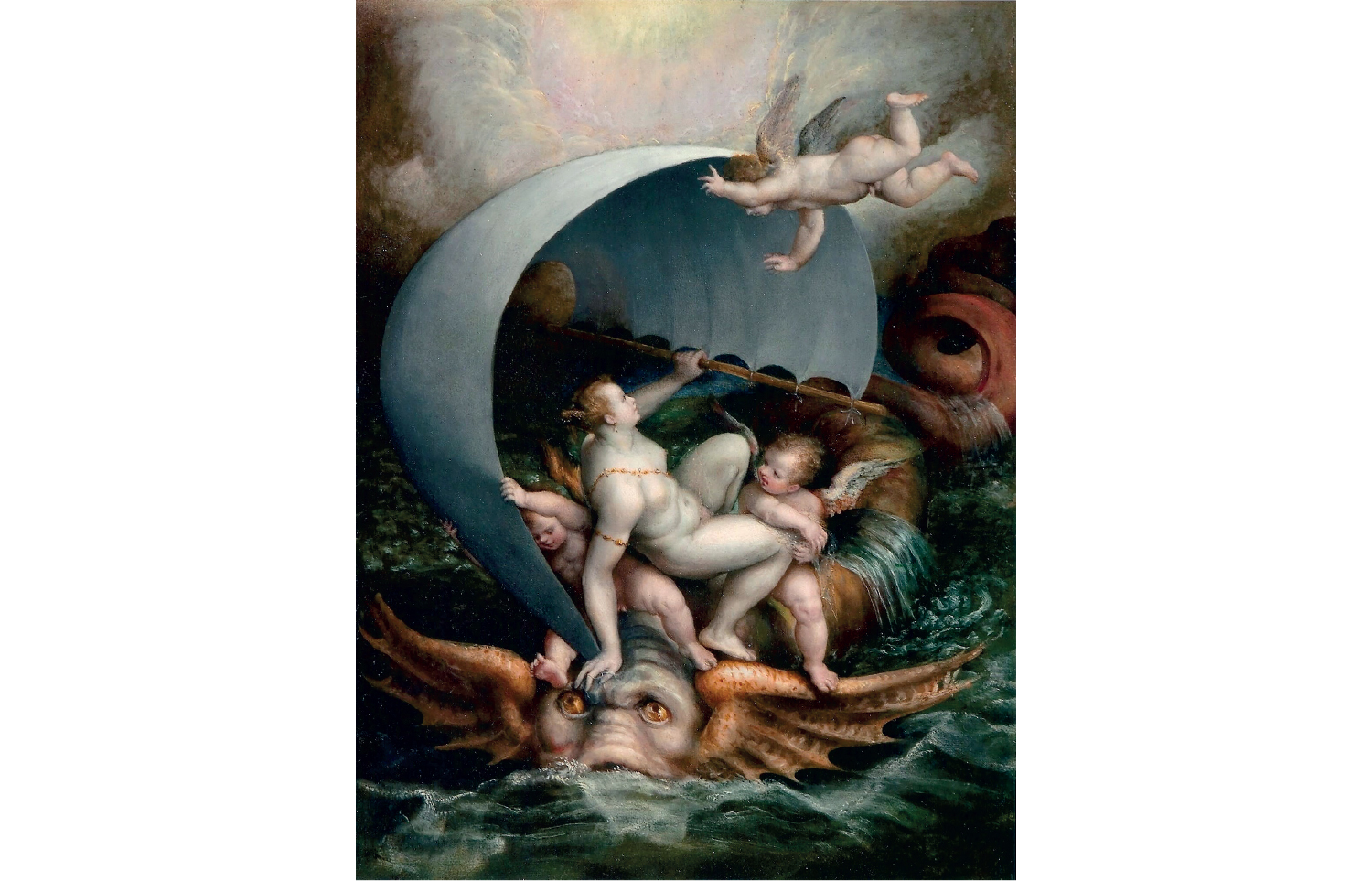Reviewing the Prado’s joint exhibition of Sofonisba Anguissola and Lavinia Fontana in the Art Newspaper three years ago, Brian Allen pronounced it well worth seeing but predicted that each of these pioneering 16th-century women artists ‘would wither in the spotlight of her own retrospective’. Was he right? In its new monographic exhibition devoted to Fontana, the National Gallery of Ireland puts his waspish prediction to the test.
Her ‘Galatea and Cherubs’ and ‘Venus and Mars’ are believed to be the first nudes painted by a woman
Ireland’s National Gallery was an early investor in Fontana, acquiring her most ambitious work, ‘The Visit of the Queen of Sheba to King Solomon’ (1599), eight years after opening in 1864. During conservation for the exhibition, infrared reflectography revealed several pentimenti, one of which explains the rather strange resemblance of the Queen’s ladies-in-waiting to a flock of swans: at some point in the picture’s evolution Fontana shifted the whole retinue up a notch by lengthening their necks under their ruffs. Anatomy was never her strong point. As a woman artist she had no opportunities to draw from life, but – like other restrictions on her sex – that didn’t hold her back. Her ‘Galatea and Cherubs’ (c.1590), ‘Venus and Mars’ (c.1595) and ‘Minerva Dressing’ (1613) are believed to be the first nudes painted by a woman – among many firsts in the extraordinary career of this serial shatterer of glass ceilings.
Fontana came to painting relatively late; she was 23 in 1575 when she painted her earliest dated work. Her painter father Prospero Fontana had no sons and after becoming ill in the 1560s trained up his daughter to take over his studio. But as a woman in 16th-century Bologna, Lavinia couldn’t do business in her own name: she needed the studio version of a house husband. Step up Gian Paolo Zappi, a man of good social standing but little earning potential from nearby Imola. Their marriage contract was highly unorthodox: Gian Paolo would marry Lavinia without a dowry, move into the Fontana family home in Bologna and allow her to pursue her career as an artist. A marriage portrait she painted for him in 1577 shows her seated at a virginal with an easel in the background, a woman of diverse accomplishments but unremarkable looks – ‘neither beautiful nor ugly, but somewhere between the two’ in the opinion of her father-in-law.

Having established herself as a portraitist with a clientele of male academics and prelates, Fontana moved in on the more profitable female market, relocating to the smart part of town where the Bolognese nobility had their palazzi. There she made herself popular with the ladies by painting portraits that doubled as inventories of her sitters’ jewels, every item of bling painstakingly rendered down to the jewelled collars and earrings worn by their lapdogs. ‘All the Ladies of the City flocked in want of her,’ her biographer Carlo Malvasia reported. ‘There was nothing greater that they desired than to be portrayed by her.’
As the mother of 11 children, she spent the best part of her professional life either pregnant or in mourning
It was laborious work. Zappi may have helped in the studio, though Malvasia disses his painting skills, joking that he was relegated to the role of ‘tailor’ assisting with drapery. But if Fontana’s output of some 130 works in 40 years was relatively small, it wasn’t because of the faff of adding drop shadows to the hundreds of pearls on the Queen of Sheba’s costume. As the mother of 11 children, this redoubtable woman spent the best part of her professional life either pregnant or in mourning. Only three of her children survived her. The most grievous blow was the loss of her 14-year-old daughter Laudomia, a talented painter she probably hoped would take over her studio. After her death in 1602 Fontana moved to Rome, where she became a portraitist to the Vatican Palace under Pope Paul V (a former papal legate to Bologna she had cannily made godfather to her youngest son) and portrayed the Roman goddess of wisdom as no one had ever seen her – in the nip – for his nephew Scipione Borghese. The fact it was painted by a woman will have added a frisson to this freak of naturism.

‘Minerva Dressing’ was Fontana’s last recorded painting; she died in Rome with ‘broken hands’ in 1614 aged 62. Does she wither in the spotlight of her own retrospective? Does she hell. True, her work is uneven. Her architectural perspectives are squiffy, her anatomy is shaky and her paint-handling finicky. She never acquired the fluidity born of early training and, although contemporary with Bologna’s baroque pioneers, the Carracci, she seems stylistically stuck in a mannerist past. The finest works in this show are not paintings but portrait drawings in a precious little album on loan from the Morgan Library & Museum New York; there’s no comparison between her stiff and stilted oil ‘Portrait of a Gentleman in Armour’ (late 1590s) and the living, breathing chalk drawing on which it is based. Yet she dared to charge as much as Van Dyck. As a painter she was unexceptional, but as a career woman she made history.







Comments